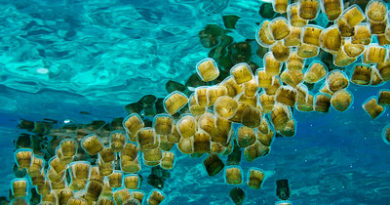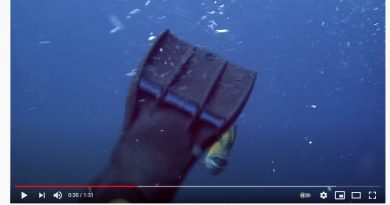Crossing Cebu
Manila – Vienna (10000 km): via Taipei, 2 flights, 17 hours.
Malapascua (Cebu province, Philippines) – Dumaguete (Negros Oriental province, Philippines): Flatboat, bangka boat, flatboat, van, car, shuttle bus, ferry, tricycle (250 km)…. 18 hours.
The late great Bill Hicks is on record as saying:
“By the way if anyone here is in advertising or marketing…kill yourself. It’s just a little thought; I’m just trying to plant seeds. Maybe one day they’ll take root – I don’t know. You try, you do what you can.”
But there is one advertising slogan which speaks the truth:
“It’s more fun in the Philippines!”
I just came back from very productive two weeks with People and the Sea, an environmental NGO in Malapascua, Philippines. Malapascua is a small island on the northern tip of mainland Cebu. I usually live in Dauin near Dumaguete, in Negros Oriental, one province south of Cebu. The distance between Malapascua and Dauin is 250 kilometers, as the tern flies, but it took me a very long day to get there. That sounds like a bit of a drag but it was in fact a really good adventure – with lots of opportunities for people watching and observing the landscapes, towns and villages and countryside life.
The journey started with a short flatboat ride from a beach in Malapascua. The protein-shake-upsized version of myself plus all my scuba gear probably contributed significantly to the very low position of that flatboat in the water. After about a hundred meters, myself & about 20 other passengers climb into a bangka, the traditional Filipino outrigger-boat.
Pro tip: keep your laptop and phone in a dry-bag during such transfers with a non-zero probability for luggage-seawater contact!
The bangka ride back to mainland Cebu takes about half an hour, the waves are sizeable today. In the east, I can see the mountains of Leyte. Between Mala and Cebu lies one uninhabited island, oddly named “chocolate island”. Terns circle over-head. A few flying fish, spooked by the engine noise of our vessel, break the water surface and glide away from us. Once we arrive on the northern tip of Cebu, we see unusually intense waves breaking on the perimeter of the reef-flat. The bangka gets stuck; Everyone is asked to stand in the front of the boat, to distribute the weight more favorably. Two young fit looking dudes without shirts and a chubby one with a shirt on push our boat at the outriggers off the sand bank it’s stuck on. These bangkas float due to their hull and their bamboo outriggers, and the hull does not sit in the water very deeply. Soon, we are freed again and land a short distance from the pier in Cebu. Another flatboat brings us almost on shore, an interesting short walk over a urchin-populated seagrass meadow actually onto dry land.
The next leg of my trip will be done by van, called a v-hire, which will take me from the north of Cebu to Cebu City. But not so fast! We first have to wait for at least 5 more paying customers before we can depart.
Not so fast! Is in fact the key phrase here, and the wait takes a good 90 minutes. It’s time for small talk with some of the local motorcycle-taxi riders who are waiting for passengers. After the usual exchanges (“Oh, you speak Visayan? Do you have a Filipina wife? How many children?”) the topic of the small-talk shifts to political assassinations. The major of the municipality survived a shooting not too long ago, and the conclusion is “If you have money, you have enemy!”. After this insight, while still waiting for more fellow v-hire riders, I even get some scientific manuscript writing done on my laptop.
Finally, a group of tired looking blond Euro-chicks plus one fit looking Euro-dude climb into the v-hire, and off we go. We drive south along the length of Cebu, and sugarcane and more sugarcane lines the road. Water buffaloes rest in shallow muddy ponds, and scores of laughing schoolkids in matching uniforms head home.
Between the villages, isolated houses are spread among the rolling sugarcane hills. It’s not a terribly hot day, and the van has air conditioning anyways. It’s enjoyable to watch this peaceful landscape. However, what mars my peaceful reflections quite a bit is that my ex-wife is from, and I believe, still living in this area. Last I heard from her is that she is now a pig-breeder. Let me say this:
On our drive south eventually the villages turn into towns. The first 7-Eleven after almost two hours of the trip announces the end of the countryside and the onset of the semi-urban sprawl on the perimeters of Cebu City. Soon, the buildings become multi-level, and the traffic a syrupy crawl. No more water buffaloes frolic by the roadside, instead bakeries, pawn-shops and fast food shops line the “national highway”.
In Cebu City I meet a dear old friend and we chat about marine conservation, scuba diving and underwater photography. In a mall we have some Thai food. I love it! For some reason, of all the Asian cuisines, the Filipino style of cooking took a pass when it came to spiciness. Supposedly, the food of the Bicol province is an exception – I haven’t been there but I have enjoyed Bicol Express (spicy pork in coconut milk) many times. Why is the national cuisine, on average, so sub-spiced? “Because we are sweet!” according to my girlfriend…
The Thai coconut chicken soup gives me the taste-bud over-stimulation I had been craving for. Panicky shallow breathing induced by biting on an extra-hot chili interrupts my ranting about excessive marine algal growth for a minute.
Next relay: a ferry ride from Cebu City to Dumaguete. Buying a ticket for these ferries is always a bit of a mix between regular standing-in-line and pro wrestling. As in pro wrestling, you can’t actually hurt anyone, but it surely looks like there is a lot of pushing and jumping over other people going on. Then something utterly unbelievable happens! The ferry port in Cebu City likes to play airport, there is a security check with an x-ray machine at the entrance. The security personal finds my dive knife and asks what it’s for … well, for cutting fishing lines. They tell me that I have to hand it in and will only get it back in Dumaguete. It’s clear to me that this dive-knife retrieval would in the best case take a lot of time, in the worst case not happen at all. I explain to them that I have traveled with this knife on ferries many times before and that the knife’s tip is blunted anyway, and that it’s not a weapon …. And they agree to let me keep the knife!!
Security personal showing signs of reason & common sense! Incredible.
The night ferry deck looks like a communal housing section of an American prison, as seen in gangster movies, but not filled with angry frustrated men, rather with families and sleepy single travelers. Everybody gets a bed for the 6 hour journey. In fact, I love the night ferry. The middle of the ocean at night is a peaceful, but also a large, dark, featureless place. What would happen if I jumped off the boat right now? In the warm water of the tropical Pacific, hypothermia would not kill me. The coast of Negros looks too far away to reach by swimming even for a fit person. There is no other human around to pick me up….
Negros is a cluster of massive volcanoes, and most of the human settlement is on the coast and at night a string of lights outlines the coastline. Once we near Dumaguete, the lights become denser.
Always impressive: The parking of these roro (roll on, roll-off) ferries. Huge steel-hulled ships, with space for a dozen or so cars and more than a hundred people, they nevertheless need to be placed right along the pier rather carefully. It’s done by procedure involving well-timed short bursts of power by the ship-screws and by skillfully pulling ropes already attached to the side of the pier. As a tribute to these skilled sailor men, let’s listen to this TBNGR classic:
It’s 1:30 am. I left Malapascua 18 hours ago. My lovely girlfriend, sleepily leaning against a harborside-wall, welcomes me back to Negros. A bit more negotiating with tricycle drivers who want to charge us a foreigner-rate for the ride, and we are on our way.
If you like my writing AND can read German, check out my newest popular science book about the very extremest extreme brain states: Gehirn Extrem



